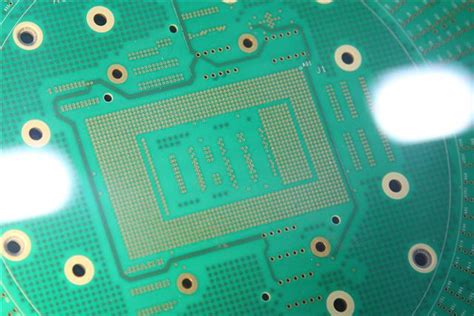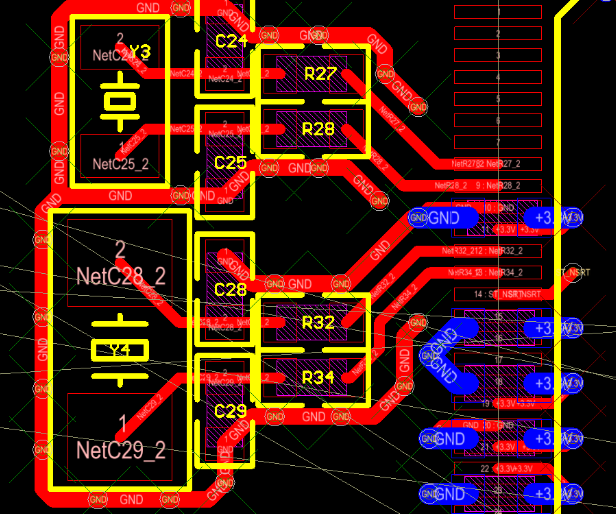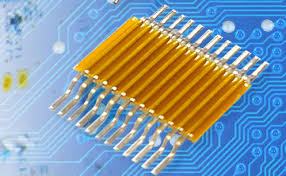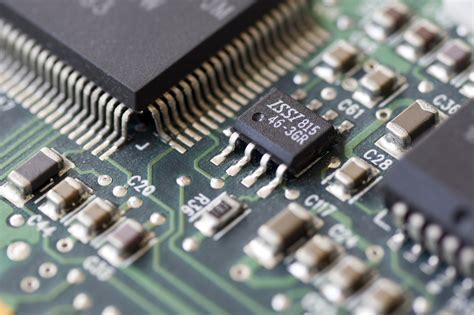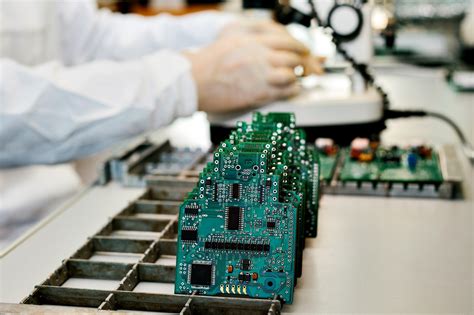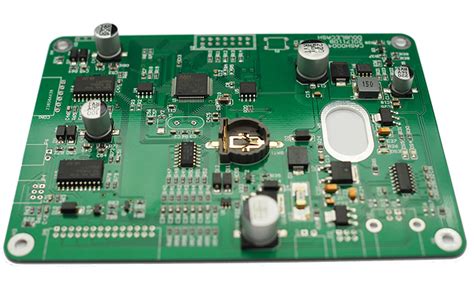Flexible PCB Printers: Revolutionizing Electronics Manufacturing
Introduction
The electronics industry has witnessed a paradigm shift with the advent of flexible printed circuit boards (PCBs). These innovative components have become integral to modern devices, enabling the creation of lightweight, compact, and durable electronics. As the demand for flexible PCBs continues to grow, so does the need for advanced manufacturing technologies. Among these, flexible PCB printers have emerged as a game-changer, offering unprecedented precision, efficiency, and versatility in the production of flexible circuits. This article delves into the world of flexible PCB printers, exploring their technology, applications, benefits, and future prospects.
Understanding Flexible PCBs
Before diving into the specifics of flexible PCB printers, it is essential to understand what flexible PCBs are and why they are so important. Flexible PCBs, also known as flex circuits, are made from flexible polymer materials such as polyimide or polyester. Unlike traditional rigid PCBs, which are made from fiberglass or other stiff substrates, flexible PCBs can bend, twist, and fold without breaking. This flexibility makes them ideal for applications where space is limited, or where the circuit needs to conform to a specific shape.
Flexible PCBs are used in a wide range of industries, including consumer electronics, automotive, medical devices, aerospace, and more. They are commonly found in smartphones, wearables, medical implants, and even satellites. The ability to create circuits that can withstand mechanical stress and environmental challenges has made flexible PCBs a cornerstone of modern electronics design.
The Role of Flexible PCB Printers
The production of flexible PCBs requires specialized equipment capable of handling delicate materials and intricate designs. This is where flexible PCB printers come into play. These printers are designed to deposit conductive inks, adhesives, and other materials onto flexible substrates with high precision. Unlike traditional PCB manufacturing methods, which often involve etching and drilling, flexible PCB printers use additive manufacturing techniques to build circuits layer by layer.
Flexible PCB printers are equipped with advanced features such as high-resolution print heads, precise motion control systems, and sophisticated software for design and calibration. These features enable the printers to create complex circuits with fine traces, small vias, and tight tolerances. Moreover, flexible PCB printers can handle a variety of materials, including conductive inks, dielectric layers, and protective coatings, making them versatile tools for electronics manufacturing.

Key Technologies in Flexible PCB Printing
Several key technologies underpin the functionality of flexible PCB printers. These include:
- Inkjet Printing: Inkjet printing is one of the most common methods used in flexible PCB printers. It involves depositing tiny droplets of conductive ink onto a substrate to create circuit patterns. Inkjet printing offers high resolution and the ability to print on a wide range of materials, making it ideal for flexible PCBs.
- Aerosol Jet Printing: Aerosol jet printing is a more advanced technique that uses a focused stream of aerosolized conductive ink to create circuits. This method allows for the printing of extremely fine features and can be used on 3D surfaces, making it suitable for complex flexible PCB designs.
- Screen Printing: Screen printing is a traditional method that involves pushing conductive ink through a mesh screen onto a substrate. While it is less precise than inkjet or aerosol jet printing, screen printing is cost-effective and suitable for large-scale production of flexible PCBs.
- Laser Direct Structuring (LDS): LDS is a process that uses a laser to selectively activate areas of a substrate, which are then metallized to create conductive traces. This method is particularly useful for creating 3D circuits on flexible substrates.
- Roll-to-Roll Printing: Roll-to-roll printing is a high-speed, continuous process that involves printing circuits on a flexible substrate that is unwound from a roll, processed, and then rewound. This method is ideal for mass production of flexible PCBs.
Applications of Flexible PCB Printers
Flexible PCB printers have a wide range of applications across various industries. Some of the most notable applications include:
- Consumer Electronics: Flexible PCBs are widely used in smartphones, tablets, wearables, and other consumer electronics. Flexible PCB printers enable the production of compact, lightweight circuits that can be integrated into these devices without compromising performance.
- Medical Devices: In the medical field, flexible PCBs are used in devices such as pacemakers, hearing aids, and diagnostic equipment. Flexible PCB printers allow for the creation of circuits that can conform to the human body, making them ideal for medical applications.
- Automotive: The automotive industry is increasingly adopting flexible PCBs for applications such as sensors, lighting, and infotainment systems. Flexible PCB printers enable the production of circuits that can withstand the harsh conditions of automotive environments.
- Aerospace: In aerospace, flexible PCBs are used in satellites, aircraft, and other high-performance applications. Flexible PCB printers allow for the creation of circuits that are lightweight, durable, and capable of withstanding extreme temperatures and vibrations.
- Internet of Things (IoT): The IoT relies on a vast network of interconnected devices, many of which require flexible PCBs. Flexible PCB printers enable the production of circuits that can be integrated into a wide range of IoT devices, from smart home appliances to industrial sensors.
Benefits of Flexible PCB Printers
The adoption of flexible PCB printers offers numerous benefits to electronics manufacturers. Some of the key advantages include:
- Precision and Accuracy: Flexible PCB printers are capable of producing circuits with extremely fine features and tight tolerances. This level of precision is essential for modern electronics, where space is at a premium and performance is critical.
- Versatility: Flexible PCB printers can handle a wide range of materials and substrates, making them versatile tools for electronics manufacturing. This versatility allows manufacturers to produce a variety of circuits for different applications.
- Cost-Effectiveness: While the initial investment in a flexible PCB printer may be high, the long-term cost savings can be significant. Additive manufacturing techniques reduce material waste, and the ability to produce circuits in-house can lower production costs.
- Speed and Efficiency: Flexible PCB printers can produce circuits quickly and efficiently, reducing lead times and increasing production throughput. This is particularly important in industries where time-to-market is critical.
- Customization: Flexible PCB printers allow for a high degree of customization, enabling manufacturers to create circuits tailored to specific applications. This flexibility is essential for meeting the unique requirements of different industries.
Challenges and Future Prospects
Despite their many advantages, flexible PCB printers also face several challenges. One of the primary challenges is the high cost of equipment and materials. Conductive inks, for example, can be expensive, and the printers themselves require significant investment. Additionally, the technology is still evolving, and there are limitations in terms of the types of materials that can be used and the complexity of circuits that can be produced.
However, the future of flexible PCB printers looks promising. Advances in materials science, printing technology, and automation are expected to drive down costs and improve the capabilities of these printers. For example, the development of new conductive inks with better performance and lower costs could make flexible PCB printing more accessible to a wider range of manufacturers. Similarly, advancements in 3D printing and multi-material printing could enable the production of even more complex and integrated circuits.
Another exciting prospect is the integration of flexible PCB printers with other manufacturing technologies, such as robotics and artificial intelligence. This could lead to fully automated production lines capable of producing flexible PCBs with minimal human intervention. Such advancements could revolutionize the electronics industry, enabling the mass production of flexible circuits for a wide range of applications.

Conclusion
Flexible PCB printers are at the forefront of a technological revolution in electronics manufacturing. By enabling the production of lightweight, durable, and highly customizable circuits, these printers are helping to drive innovation across a wide range of industries. While challenges remain, the ongoing advancements in materials, printing technology, and automation are likely to overcome these hurdles, paving the way for even greater adoption of flexible PCB printers in the future.
As the demand for flexible electronics continues to grow, flexible PCB printers will play an increasingly important role in shaping the future of technology. Whether it’s in consumer electronics, medical devices, automotive systems, or aerospace applications, the impact of flexible PCB printers is undeniable. By providing manufacturers with the tools they need to create cutting-edge circuits, these printers are helping to bring the next generation of electronic devices to life.

